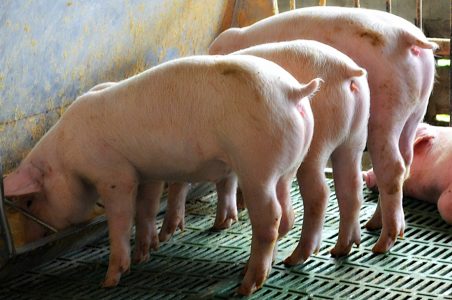The global pig feed market is projected to reach USD 29.4 billion by 2032, up from USD 20.59 billion in 2022, according to a report by According to Market Research Future (MRFR).
This growth reflects a compound annual rate of 3.63% from 2024 to 2032, driven by rising pork consumption, evolving livestock nutrition standards, and feed innovation. As pork remains the most consumed meat globally, demand for efficient and sustainable feed continues to rise across farming systems. Modern formulations aim to improve feed conversion, reduce disease risk, and comply with stricter regulations on antibiotic use.
Expanding revenue streams and feed innovation
Commercial feed production remains the market’s largest revenue source, supplying industrial farms with consistent, high-performance nutrition.
Additives and supplements, especially probiotics, enzymes, and organic acids, are gaining traction as antibiotic alternatives, offering higher margins and improved animal outcomes. On-farm mixing also contributes to market activity, with smallholders buying raw materials and blending feed on-site.
Specialty feeds targeting piglets, breeding sows, and organic farms represent a growing niche. These premium products cater to specific health and performance goals, including early immunity, reproductive success, and compliance with non-GMO standards.
Feed producers are also investing in precision nutrition tools, allowing farmers to monitor intake and adjust rations for optimal results.
Regional trends and market drivers
Asia Pacific leads global demand, driven by China’s dominance in pork production and rising commercial farming in Vietnam, Thailand, and the Philippines.
Europe’s market is shaped by strict regulations and advanced feed technologies, with Germany, Spain, and Denmark as key contributors. North America maintains steady demand, emphasizing sustainability and industrial efficiency in feed production. Latin America and Africa are emerging markets, supported by urbanization and growing protein needs.
Backyard and smallholder farms remain significant in many regions, especially where household-level pig rearing is common. Organic farms and breeding operations also contribute to demand, requiring nutrient-rich and antibiotic-free formulations.
Key drivers include pork’s popularity, feed efficiency goals, and regulatory shifts toward safer, eco-friendly nutrition. Volatile grain prices and climate impacts on raw materials influence feed costs and sourcing strategies. Export opportunities are expanding, as global pork demand fuels growth in major producing countries.
Outlook and strategic shifts
MRFR expects continued growth in specialty feeds, including organic-certified and customized formulations tailored to specific farming practices. Digital farming tools—such as smart feeders and data analytics—will help optimize feed use, reduce waste, and improve animal health. Global supply chains are expanding, with more cross-border trade in feed ingredients and finished products.
Sustainability is becoming a key focus for feed producers. Many are adopting circular economy principles and low-emission technologies to reduce environmental impact. As farming practices evolve, pig feed will remain essential in supporting reliable pork production and meeting global food needs.

